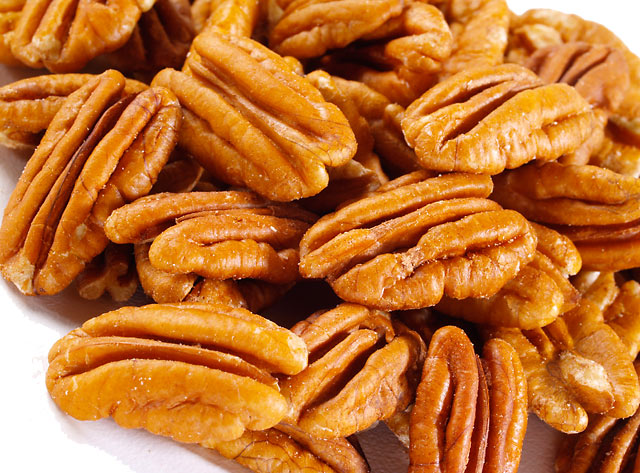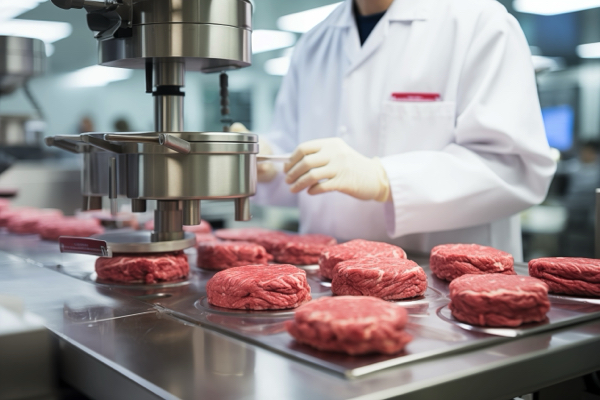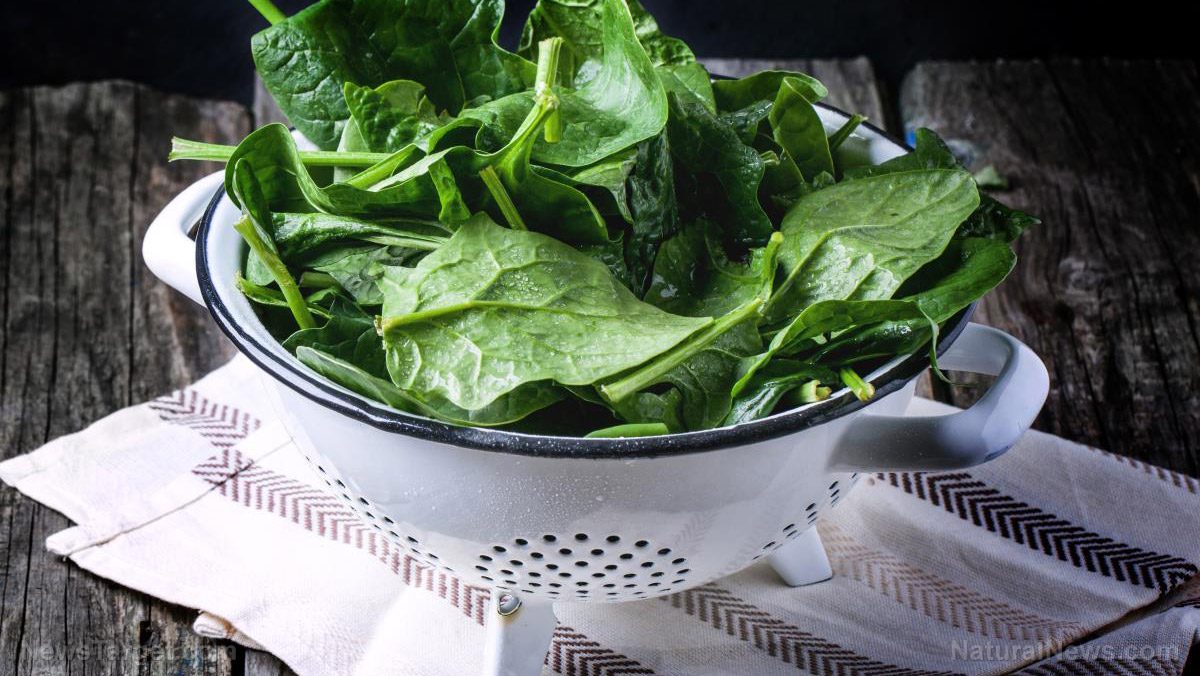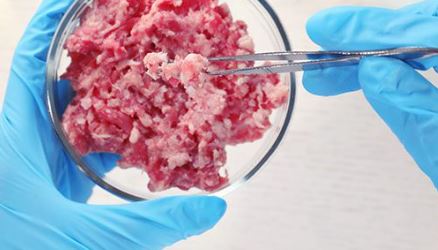Festive flavors: The sweet history, nutritional profile and health benefits of pecan pie
12/26/2024 / By Zoey Sky

- Pecan pie, a beloved holiday dessert in the U.S., symbolizes Southern hospitality and tradition, with its rich history rooted in Indigenous diets and American culinary evolution.
- European settlers adopted pecans into their cuisine, with the nut thriving in the warm climates of the American South.
- The modern pecan pie emerged in the early 20th century with the introduction of corn syrup, particularly Karo syrup, which created its signature gooey filling.
- Pecans are a powerhouse of nutrients, including copper, fiber, healthy fats, thiamine and zinc.
- For a healthier version of pecan pie, replace corn syrup with natural sweeteners like raw honey or maple syrup.
Pecan pie, with its golden crust and sweet, nutty filling, is more than just a holiday dessert — it’s an iconic dish for a reason. This beloved treat, synonymous with Thanksgiving and Christmas in the U.S., has a rich history that ties it to the American South, Indigenous traditions and the evolution of American cuisine.
But beyond its sentimental value, pecan pie is also a surprisingly nutritious dessert, packed with health benefits that make it a festive favorite.
To understand what makes pecan pie special, you should first look at its star ingredient: the pecan. Native to North America, pecans have been a staple of Indigenous diets for centuries.
The Algonquin people, for example, valued pecans not only for their rich flavor but also for their nutritional benefits. The name “pecan” itself comes from the Algonquin word “pacane,” meaning “a nut that requires a stone to crack.” Pecans were a vital food source, providing sustenance during the colder months and symbolizing abundance and resourcefulness.
When European settlers arrived, they adopted pecans into their own culinary traditions. Settlers in the southeastern U.S., especially the French and the Spanish, then started cultivating pecans, which thrived in the region’s warm climate.
Pecans soon became a staple in Southern kitchens, symbolizing the area’s rich natural resources and the culinary traditions that grew around them.
The first documented pecan pie recipe appeared in the late 19th century, but it wasn’t until the early 20th century that the dessert America knows and loves today took shape. The introduction of corn syrup, particularly Karo syrup, revolutionized pecan pie. Karo syrup’s thick, sweet consistency created the signature gooey filling that defines modern pecan pie.
By the 1930s, Karo syrup’s recipe for pecan pie was printed on its bottle labels, making the dessert accessible to home cooks across the country. This marketing strategy helped pecan pie become a nationwide sensation, solidifying its place as a holiday staple.
In Texas, where pecan production is a major industry, the nut holds a special place in the state’s identity. In 1919, Texas declared the pecan tree its official state tree, and in 2013, pecan pie was named the official state pie. This recognition highlights the nut’s importance to Texas’s economy and heritage, as well as its role in Southern culture.
Pecan pie’s association with family gatherings and holiday celebrations makes it a beloved dessert for many. Whether it’s served at Thanksgiving, Christmas or a Sunday supper, pecan pie embodies the warmth and comfort of home. Its rich, nutty flavor and sweet filling bring people together, making it a dessert that transcends regional boundaries and connects people across the country.
Variations on a beloved classic treat
While the classic pecan pie recipe features a buttery crust filled with pecans, sugar, eggs and corn syrup, there are many variations that reflect regional tastes and modern dietary preferences.
Here are a few popular versions:
Bourbon pecan pie
Adding a splash of bourbon whiskey to the filling gives this version a bold, Southern flair, often enjoyed in Kentucky and other parts of the South.
Gluten-free and vegan pecan pie
Modern dietary trends have led to the creation of gluten-free and vegan versions, using almond flour or rice flour crusts and plant-based substitutes for eggs and dairy.
Honey pecan pie
Replacing corn syrup with honey creates a slightly less sweet pie that highlights the natural flavors of the pecans.
Maple pecan pie
In New England, where maple syrup is a common ingredient, this variation uses maple syrup instead of corn syrup for a distinct earthy sweetness.
These variations showcase the versatility of pecan pie, allowing bakers to adapt the classic recipe to suit their tastes and dietary needs.
The nutritional power of pecans
Pecan pie isn’t just delicious — it’s also surprisingly nutritious. Pecans, the key ingredient, are packed with essential nutrients that offer numerous health benefits.
Here’s a closer look at what makes pecans so good for you:
Copper
You need copper for proper nerve function, immune health and the production of red blood cells.
Fiber
Pecans are a good source of dietary fiber, which aids in healthy digestion and helps maintain a healthy gut.
Healthy fats
Pecans are rich in monounsaturated and polyunsaturated fats, which are linked to improved heart health and reduced inflammation
Thiamine (vitamin B1)
Thiamine helps convert carbohydrates into energy, keeping your body fueled throughout the day.
Zinc
Zinc supports immune function, cell growth, brain health and wound healing.
Despite its indulgent reputation, pecan pie can be part of a balanced diet. Here are some of the health benefits associated with pecans:
Antioxidants
Pecans are packed with antioxidants, which help protect cells from damage caused by free radicals. These antioxidants can also support good health.
Brain function
Pecans are rich in nutrients that support brain health, including healthy fats and antioxidants. Studies have linked regular nut consumption to improved cognition and a reduced risk of cognitive decline.
Heart health
Pecans are a great source of monounsaturated fatty acids, which have been shown to improve cholesterol levels and reduce the risk of heart disease. Studies have found that incorporating pecans into your diet can lower LDL cholesterol (bad cholesterol) and improve the ratio of total cholesterol to HDL cholesterol (good cholesterol). (Related: The sweet saga of fruitcake: A nutritional powerhouse with a long shelf life.)
Healthy pecan pie recipe
Corn syrup is another key ingredient in pecan pie, but the syrup is actually considered more unhealthy than sugar.
If you want to serve a healthier pie for the holidays, try this recipe. It features a healthy pie crust and filling. Instead of corn syrup, you can use other natural sweeteners, like raw honey or pure maple syrup.
Raw honey has a mild flavor but an intense sweetness. Use it as an alternative to corn syrup without changing the taste of your pecan pie. You can also use pure maple syrup, but it will give the pie a strong maple flavor, which some guests might not like.
Ingredients:
- 2 cups raw pecans
- 1/2 cup raw honey
- 3 tablespoon whole wheat pastry flour
- 2 tablespoons coconut oil, melted
- 1 tablespoon unsweetened almond milk
- 1 teaspoon ground ground cinnamon
- 1 teaspoon pure vanilla extract
- 1/8 teaspoon sea salt
- 3 eggs
- 1 bottom pie crust (For a healthier pie crust, make one ahead of time with your preferred flour, such as whole wheat pastry flour and coconut oil instead of butter.)
- 1/2 teaspoon fresh orange zest (optional)
Instructions:
- Preheat the oven to 400 F.
- Get a large bowl and combine the ground cinnamon, coconut oil, eggs, fresh orange zest, raw honey, pure vanilla extract, sea salt, unsweetened almond milk and whole wheat pastry flour. Stir to combine.
- Arrange the raw pecans into the prepared 9-inch pie pan.
- Pour the liquid filling mixture over the pecans. Use a clean spoon to spread the filling over the nuts if necessary.
- Place the pan into the oven and bake for 10 minutes at 400 F, then reduce the temperature to 350 F and bake for 20-25 minutes.
- The pecan pie will rise in the oven. The pie is done when it has small cracks in the top and is no longer jiggly when shaken.
- Remove the pie from the oven. Set it aside to cool, preferably overnight.
Pecan pie’s combination of rich history, cultural significance and nutritional benefits makes it a perfect dessert for Christmas. Its association with family gatherings and festive traditions adds an extra layer of meaning to this beloved treat.
Whether you’re enjoying a classic version or a creative variation, pecan pie is a dessert that brings people together and celebrates the warmth of the season.
Visit Superfood.news to read more stories about nutritious ingredients that you can use to make other holiday dishes.
Watch this video about the health benefits of Organic Extra Virgin Coconut Oil, another key ingredient for a healthy pecan pie.
This video is from the Health Ranger Store channel on Brighteon.com.
More related stories:
Unique holiday dishes: The surprising history behind the Christmas ham tradition.
Eat healthily and don’t overindulge: 5 holiday weight gain facts.
A toast to tradition: A nutritional and historical look at EGGNOG.
Christmas pudding: A delectable, healthy treat worth serving this holiday season.
Sources include:
Submit a correction >>
Tagged Under:
#nutrition, Christmas, Christmas dishes, Christmas recipes, holiday dishes, holiday recipes, Holidays, how-to, natural health, natural ingredients, nutrients, organics, pecan pie, pecans, pies, recipes
This article may contain statements that reflect the opinion of the author




















